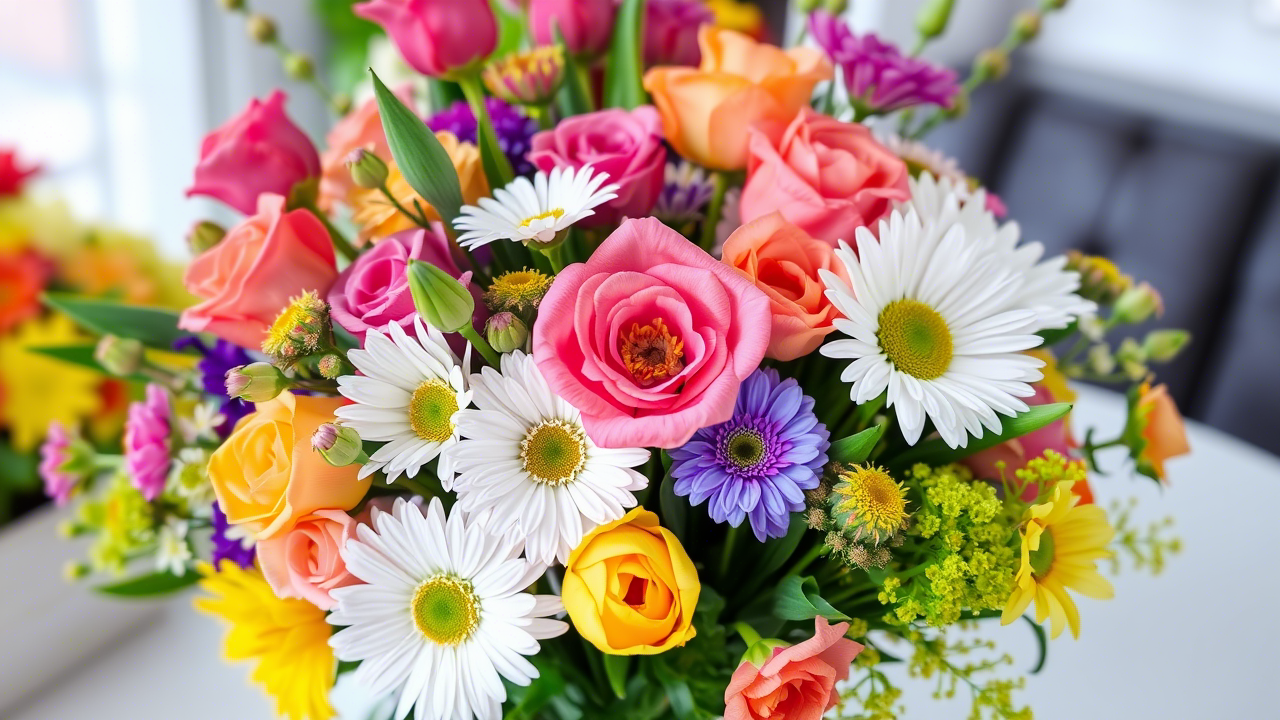When my friend Lily announced her pregnancy last month, I couldn’t help but smile at the connection between her name and the delicate white blooms that had filled her wedding bouquet years earlier. It got me thinking about the beautiful tradition of naming children after name with flower– a practice that spans cultures, generations, and continents.
Why We Love Flower Names
There’s something inherently hopeful about naming a child after something that grows, blooms, and adds beauty to the world. Flower names carry natural symbolism that other name categories simply can’t match.
“I named my daughter Daisy because I wanted her life to be filled with freshness and new beginnings,” shared Maria, a mom I met at a local playground. “Plus, it just makes me smile every time I say it.”
This sentiment isn’t new. Flower names have ebbed and flowed in popularity throughout history, often reflecting broader cultural trends toward naturalism, romanticism, or connection with the earth.
The Most Popular Flower Names Today
Not all flower names share equal popularity. Some have become mainstream classics while others remain delightfully unique. Based on recent naming statistics, here are some that parents are currently loving:
For Girls:
- Rose/Rosie – Timeless elegance that never truly fades
Rose and Rosie indeed embody timeless elegance. The name Rose has maintained popularity across generations precisely because it balances classic beauty with a simple, recognizable charm.
The name Rose comes from the Latin “rosa” and directly references the flower known for its beauty and fragrance. As a given name, it peaked in popularity during the late 19th and early 20th centuries, then experienced a revival in recent decades as parents rediscovered vintage names.
Rosie, as the affectionate diminutive, adds warmth and approachability to the more formal Rose. It manages to be simultaneously sweet for a child and sophisticated enough for an adult – a versatility that contributes to its enduring appeal.
The symbolism of roses themselves – representing love, beauty, and courage across many cultures – adds depth to the name that goes beyond just pleasant sounds. This rich cultural significance has helped Rose/Rosie maintain its appeal even as naming trends fluctuate.
- Lily – Pure and sophisticated
Lily perfectly captures a rare balance of purity and sophistication that few names achieve. Its association with the elegant white flower gives it a natural delicacy that translates beautifully to a name.
The name Lily derives from the Latin “lilium” and has strong symbolic connections across many cultures. In Western traditions, lilies represent innocence and purity, while in Chinese culture, they symbolize good fortune and lasting relationships. This cross-cultural appeal has helped maintain its popularity.
What makes Lily particularly special is its versatility. It works wonderfully for both a child and an adult, growing gracefully with its bearer. The name sounds fresh and youthful while still carrying a certain refinement that works professionally.
Lily experienced a significant revival starting in the 1990s and 2000s, becoming one of the top flower names chosen by parents seeking something traditional yet not overly common. Its two-syllable structure with the pleasant “lee” sound makes it melodic and easy to pronounce across languages.
The name also offers flexibility through variations like Lillian, Lilia, or Liliana for those wanting something more formal with Lily as a nickname option.
- Violet – Victorian charm with modern appeal
Violet is a beautiful and delicate flower that is often associated with shades of purple, though it can also be found in white or blue varieties. The violet flower belongs to the genus Viola, which includes around 400–500 species of flowering plants. These flowers are known for their heart-shaped petals and sweet fragrance.
Key Features of Violets:
- Color: Violets are most commonly purple, but they can also be blue, yellow, white, or even bi-colored.
- Shape: The petals are typically asymmetrical, with the lower petal often larger and sometimes marked with lines or spots.
- Size: They are small, usually only a few centimeters across.
- Fragrance: Many violet species have a sweet, subtle scent, which has been used in perfumes and aromatherapy.
- Leaves: The leaves are often heart-shaped and grow close to the ground.
Symbolism of Violets:
- Modesty and Humility: Violets are often seen as symbols of modesty due to their low-growing nature and unassuming beauty.
- Loyalty and Faithfulness: In some cultures, violets represent loyalty and devotion.
- Spirituality: The violet flower is sometimes associated with spiritual awareness and enlightenment.
- Love: In Victorian times, violets were used to symbolize love and affection.
Common Types of Violets:
- Sweet Violet (Viola odorata): Known for its strong, sweet fragrance, this species is often used in perfumes and candies.
- Pansies (Viola tricolor): A popular garden plant, pansies are colorful hybrids of violets.
- Johnny-Jump-Up (Viola tricolor var. hortensis): A wildflower variety with small, cheerful blooms.
- African Violet (Saintpaulia): Though not a true violet, this houseplant is named for its resemblance to the violet flower.
Uses of Violets:
- Culinary: Violets are edible and can be used to decorate cakes, salads, or desserts. Their petals can also be candied or used to make syrups and teas.
- Medicinal: Traditionally, violets have been used in herbal medicine for their anti-inflammatory and soothing properties.
- Perfumery: The sweet scent of violets has been used in perfumes and essential oils.
- Gardening: Violets are popular in gardens due to their vibrant colors and ease of care.
Fun Fact:
The violet is the state flower of Illinois, New Jersey, and Rhode Island in the United States, as well as the national flower of Greece.
- Daisy – Perpetually sunny and cheerful
Daisies are one of the most recognizable and beloved flowers, known for their simple yet charming appearance. The name “daisy” is derived from the Old English phrase “daes eage,” meaning “day’s eye,” because the flower opens at dawn and closes at dusk. Daisies belong to the family Asteraceae, which also includes sunflowers, chrysanthemums, and asters.
Key Features of Daisies:
- Appearance:
- Daisies typically have a bright yellow central disk surrounded by white (or sometimes pink or purple) ray-like petals.
- The flower head is actually a composite of many tiny florets, with the central disk made up of numerous small flowers.
- Size: They range in size, with blooms typically 2–5 inches in diameter.
- Leaves: The leaves are usually long, narrow, and slightly hairy, growing close to the ground.
- Height: Depending on the species, daisies can grow anywhere from a few inches to several feet tall.
Common Types of Daisies:
- Common Daisy (Bellis perennis):
- Also known as the English daisy, this is the classic daisy often found in lawns and meadows.
- It has small, round flower heads with white petals and a yellow center.
- Shasta Daisy (Leucanthemum × superbum):
- A larger, garden-friendly variety with pure white petals and a bold yellow center.
- Popular in bouquets and gardens due to its elegant look.
- Gerbera Daisy (Gerbera jamesonii):
- Known for its vibrant colors, including red, orange, pink, and yellow.
- Often used in floral arrangements and as decorative plants.
- Oxeye Daisy (Leucanthemum vulgare):
- A wildflower native to Europe and Asia, it resembles the Shasta daisy but is smaller and more robust.
- Often found in fields and along roadsides.
- Painted Daisy (Tanacetum coccineum):
- Features colorful petals in shades of red, pink, or white, with a yellow or bronze center.
- Known for attracting pollinators like bees and butterflies.
Symbolism of Daisies:
- Innocence and Purity: Daisies are often associated with innocence, simplicity, and purity due to their clean, fresh appearance.
- Loyalty and Love: In some cultures, daisies symbolize faithful love and loyalty.
- New Beginnings: Their association with dawn makes them a symbol of new beginnings and hope.
- Cheerfulness: The bright and sunny nature of daisies makes them a representation of joy and positivity.
Uses of Daisies:
- Decorative Purposes: Daisies are widely used in bouquets, floral arrangements, and gardens due to their cheerful and timeless appeal.
- Medicinal Uses:
- The common daisy has been used in traditional herbal medicine to treat wounds, inflammation, and coughs.
- Daisy tea is sometimes consumed for its soothing properties.
- Culinary Uses: While not as commonly eaten as other edible flowers, daisy petals can be used to garnish salads or desserts.
- Pollinator-Friendly Plants: Daisies attract bees, butterflies, and other beneficial insects, making them great additions to pollinator gardens.
Fun Facts About Daisies:
- Phototropic Behavior: Daisies turn their heads to follow the sun throughout the day, a behavior known as heliotropism.
- Perennials: Most daisies are perennial plants, meaning they come back year after year.
- Symbol of Spring: Daisies are often seen as a sign of spring and renewal due to their early blooming period.
- Healing Properties: In ancient Rome, daisies were crushed into a poultice to heal wounds and soothe skin irritations.
Growing Daisies:
Daisies are relatively easy to grow and maintain, making them a favorite among gardeners. Here are some tips:
- Sunlight: Daisies thrive in full sun but can tolerate partial shade.
- Soil: They prefer well-drained soil that is rich in organic matter.
- Watering: Water regularly, but avoid overwatering, as daisies don’t like soggy roots.
- Deadheading: Remove spent blooms to encourage continuous flowering.
- Propagation: Daisies can be grown from seeds, cuttings, or by dividing mature plants.
- Jasmine – Exotic and sweetly fragrant
Jasmine is a fragrant and elegant flowering plant that has captivated people for centuries with its intoxicating scent and delicate beauty. Belonging to the genus Jasminum, which includes around 200 species, jasmine is native to tropical and subtropical regions of Asia, Africa, and Australia. The name “jasmine” is derived from the Persian word “yasmin,” meaning “gift from God,” reflecting its revered status in many cultures.
Key Features of Jasmine:
- Flowers:
- Jasmine flowers are typically small, star-shaped, and white or yellow in color.
- They grow in clusters and are known for their intense, sweet fragrance, especially in the evening.
- Leaves:
- The leaves are usually glossy and green, arranged alternately along the stem.
- Some species have trifoliate leaves (three leaflets), while others have simple leaves.
- Growth Habit:
- Jasmine can be either a shrub or a vine, depending on the species.
- Many jasmine varieties are climbing plants, making them ideal for trellises, fences, or arbors.
- Fragrance:
- The scent of jasmine is often described as exotic, romantic, and soothing, making it a popular choice for perfumes, teas, and aromatherapy.
Common Types of Jasmine:
- Arabian Jasmine (Jasminum sambac):
- This species is famous for its use in tea, particularly in jasmine tea.
- The flowers are small, white, and intensely fragrant.
- It is the national flower of the Philippines (known as “Sampaguita”) and Indonesia.
- Common Jasmine (Jasminum officinale):
- Also known as “Poet’s Jasmine,” this variety is a deciduous climber with clusters of white, fragrant flowers.
- It is widely cultivated in gardens and is often used in perfumery.
- Winter Jasmine (Jasminum nudiflorum):
- Unlike most jasmine species, winter jasmine blooms in late winter or early spring.
- It has bright yellow flowers and is a hardy, non-fragrant variety.
- Star Jasmine (Trachelospermum jasminoides):
- Although not a true jasmine, this evergreen vine is often called “Confederate Jasmine” or “Star Jasmine.”
- It produces clusters of star-shaped, white flowers with a sweet fragrance.
- Spanish Jasmine (Jasminum grandiflorum):
- Known for its large, fragrant flowers, this species is often used in perfumes and essential oils.
- It is also used in traditional medicine for its calming properties.
Symbolism of Jasmine:
- Love and Romance: Jasmine is often associated with love, sensuality, and romance due to its sweet, alluring fragrance.
- Purity and Grace: In many cultures, jasmine symbolizes purity, elegance, and grace.
- Spirituality: Jasmine is sometimes linked to spiritual enlightenment and divine love.
- Good Luck: In some traditions, jasmine is believed to bring good fortune and prosperity.
Uses of Jasmine:
- Perfumery:
- Jasmine is one of the most important flowers in the perfume industry due to its rich, floral scent.
- It is a key ingredient in many high-end fragrances.
- Tea:
- Jasmine tea is made by infusing green or black tea with jasmine flowers, resulting in a fragrant and flavorful beverage.
- It is particularly popular in China and other parts of Asia.
- Aromatherapy:
- Jasmine essential oil is used in aromatherapy to promote relaxation, reduce stress, and improve mood.
- It is also believed to have aphrodisiac properties.
- Medicinal Uses:
- In traditional medicine, jasmine has been used to treat anxiety, insomnia, and digestive issues.
- Jasmine oil is sometimes applied topically to soothe skin irritations.
- Cultural Significance:
- Jasmine is the national flower of several countries, including Pakistan, the Philippines, and Tunisia.
- It plays a significant role in cultural ceremonies, such as weddings and religious rituals, in many Asian and Middle Eastern cultures.
Fun Facts About Jasmine:
- Night-Blooming: Many jasmine species bloom at night, releasing their fragrance to attract nocturnal pollinators like moths.
- Symbol of Beauty: In India, jasmine flowers are often worn in hair or used in garlands as a symbol of beauty and femininity.
- Ancient Use: Jasmine has been cultivated for over 3,000 years, with its origins traced back to ancient Persia and India.
- Edible Flowers: Jasmine flowers are edible and can be used to flavor desserts, cocktails, and other dishes.
Growing Jasmine:
Jasmine is relatively easy to grow, especially in warm climates. Here are some tips for cultivating this fragrant plant:
- Sunlight:
- Most jasmine varieties prefer full sun to partial shade. At least 6 hours of sunlight per day is ideal for optimal flowering.
- Soil:
- Jasmine thrives in well-drained, loamy soil. It prefers slightly acidic to neutral pH levels.
- Watering:
- Water regularly, especially during the growing season, but avoid waterlogged soil. Allow the top inch of soil to dry out between waterings.
- Pruning:
- Prune jasmine after flowering to maintain its shape and encourage new growth. This is especially important for climbing varieties.
- Support:
- For climbing jasmine varieties, provide a trellis, fence, or arbor for support. These plants can grow quite tall and spread wide.
- Propagation:
- Jasmine can be propagated through cuttings, layering, or seeds. Semi-hardwood cuttings taken in late summer are the most common method.
Jasmine in Literature and Art:
Jasmine has inspired poets, writers, and artists for centuries. Its fragrance and beauty have been celebrated in countless works of literature, music, and visual art. For example:
- In Persian poetry, jasmine is often used as a metaphor for beauty and love.
- In Indian classical music, jasmine is a recurring theme, symbolizing purity and devotion.
For Boys: (Yes, flower names work beautifully for boys too!)
- Basil – Technically an herb, but with a distinguished history as a male name
Ah, basil! While it’s most commonly known as a fragrant and versatile herb used in culinary traditions worldwide, it also has an intriguing history as a male name. Let’s explore both aspects of basil—its botanical significance and its use as a distinguished name.
Basil as an Herb
Basil (Ocimum basilicum) is a member of the mint family (Lamiaceae) and is native to tropical regions of Asia and Africa. It has been cultivated for thousands of years and holds cultural, medicinal, and culinary importance.
Key Features of Basil:
- Appearance:
- Basil plants are typically small, growing up to 20–60 cm (8–24 inches) tall.
- The leaves are green or purple, depending on the variety, with a soft, slightly serrated texture.
- Flavor:
- Basil has a sweet, peppery, and slightly minty flavor, making it a staple in Mediterranean, Southeast Asian, and Indian cuisines.
- Varieties like sweet basil, Thai basil, and holy basil each have unique flavor profiles.
- Uses:
- Culinary: Basil is a key ingredient in dishes like pesto, pasta sauces, soups, and curries. Thai basil is often used in stir-fries and pho.
- Medicinal: Traditionally, basil has been used to treat digestive issues, reduce inflammation, and boost immunity.
- Aromatherapy: Basil essential oil is believed to relieve stress and improve mental clarity.
- Symbolism:
- In ancient cultures, basil was associated with love, fertility, and protection.
- In Hinduism, holy basil (Tulsi) is considered sacred and is worshipped as a symbol of devotion to the gods Vishnu and Krishna.
Basil as a Male Name
The name “Basil” has a rich and distinguished history, particularly in Christian and Byzantine traditions. It carries a sense of nobility, wisdom, and spiritual depth.
Etymology and Meaning:
- The name Basil is derived from the Greek word “basileus”, meaning “king” or “royal.” This gives the name a regal and commanding connotation.
- In some interpretations, Basil is associated with strength, leadership, and authority.
Historical Figures Named Basil:
- Saint Basil the Great (330–379 AD):
- One of the most influential figures in early Christianity, Saint Basil was a theologian, bishop, and one of the Cappadocian Fathers.
- He played a key role in shaping Christian doctrine, particularly regarding the Holy Trinity.
- His feast day is celebrated on January 2nd in the Eastern Orthodox Church and January 15th in the Roman Catholic Church.
- Basil II (958–1025 AD):
- Known as “Basil the Bulgar-Slayer,” he was one of the most powerful Byzantine emperors, ruling from 976 to 1025.
- His reign marked the height of the Byzantine Empire’s military and cultural influence.
- Basil Rathbone (1892–1967):
- A renowned British actor best known for his portrayal of Sherlock Holmes in films during the 1930s and 1940s.
- Rathbone brought elegance and intelligence to the iconic detective role, cementing Basil as a name associated with sophistication.
Popularity of the Name Basil:
- Historically, Basil was more common in Eastern Europe, Greece, and the Middle East due to its ties to Christianity and royalty.
- In modern times, the name has become less common but retains a vintage charm, appealing to parents seeking a classic and meaningful name.
Cultural References:
- Literature: Basil has appeared in literature as a character name, such as Basil Hallward in Oscar Wilde’s The Picture of Dorian Gray. Basil Hallward is an artist whose admiration for beauty and morality shapes the novel’s themes.
- Film and Media: Beyond Basil Rathbone, the name has been used in various fictional works, often for characters with intellectual or noble qualities.
Flower Names Across Cultures
What fascinates me most is how different cultures embrace flower naming traditions. In Japan, Sakura (cherry blossom) represents the beautiful impermanence of life. In India, Kamal (lotus) signifies spiritual awakening and purity.
My colleague Hyacinth, whose family comes from Greece, told me her name connects her to ancient mythology – named after the beautiful youth beloved by Apollo and transformed into the purple flower after his death.
Popularity Trends: Then and Now
| Decade | Top Flower Names | Cultural Influences |
|---|---|---|
| 1900s | Rose, Violet, Daisy | Victorian language of flowers still influential |
| 1950s | Heather, Linda (means “linden tree”) | Nature names with modern sensibility |
| 1980s | Jasmine, Holly | Exotic influences and seasonal connections |
| 2000s | Lily, Willow, Sage | Environmental awareness, bohemian aesthetics |
| 2020s | Ivy, Dahlia, Poppy, Briar | Vintage revival, Instagram aesthetics, cottagecore |
The Psychology Behind Flower Names
There’s actual psychology behind why flower names resonate so deeply. Studies suggest names connected to nature can positively influence how others perceive us – flower names particularly evoke qualities like:
- Gentleness and nurturing ability
- Creativity and artistic sensibility
- Natural beauty and vitality
- Environmental awareness
Professor Michael Hearst, who studies naming psychology at Columbia University, notes that “names carry unconscious associations that can shape first impressions before we’ve even met someone.”
Beyond the Obvious Blooms
While Rose and Lily remain perennial favorites, parents seeking more distinctive options are exploring deeper into the botanical world:
- Amaryllis – Bold and dramatic
- Zinnia – Vibrant and resilient
- Aster – Delicate yet strong
- Calla – Elegant simplicity
- Briar – Wild and untamed
For the truly adventurous, consider these rare botanical treasures:
- Azalea – Passionate and colorful
- Ianthe – Greek for “violet flower”
- Camellia – Refined and lasting
- Jacinta – Spanish form of Hyacinth
Flower Names in Popular Culture
Our fascination with flower names shows up everywhere in culture. Literature gave us Daisy Buchanan in “The Great Gatsby” and Rose DeWitt Bukater in “Titanic.” Music celebrates them in songs like “Lily of the Valley” and “Every Rose Has Its Thorn.”
When actress Violet Affleck appears in the media, her flower name feels both timeless and modern – exactly what many parents seek.
Tips for Choosing a Flower Name
If you’re considering a bloom-inspired name for your little one, here are some things to consider:
- Meaning matters – Research the specific flower’s symbolism (red roses for passion, daisies for innocence)
- Sound and flow – How does it pair with your last name? Does it create any unfortunate initials?
- Nickname potential – Will Chrysanthemum inevitably become “Chrys” on the playground?
- Cultural connections – Does the flower have special significance in your heritage?
- Seasonality – Consider naming a winter baby after hardy blooms like Holly or a summer child after sunshine-loving flowers
The Future of Flower Names
As we collectively seek more connection with nature and meaning in our choices, flower names seem poised for continued growth. The trend toward gender-neutral parenting opens possibilities for boys to embrace names like Rowan (mountain ash tree) and Sorrel.
“I think we’ll see more parents choosing flower names specifically for their symbolism,” predicts Eleanor Jenkins, a naming consultant who’s tracked trends for over a decade. “It’s not just about pretty sounds anymore – modern parents want names with substance and story.”
My personal prediction? Look for formerly “grandparent” flower names like Marigold, Iris, and Flora to blossom in preschool classrooms over the next decade.
Whether you’re expecting a baby, writing a novel, or simply appreciate the poetry of personal names, there’s something undeniably special about connecting human identity to the natural beauty of flowers. After all, what better wish for any child than to grow, bloom, and share their unique beauty with the world?
What’s your favorite flower name? I’d love to hear in the comments!





